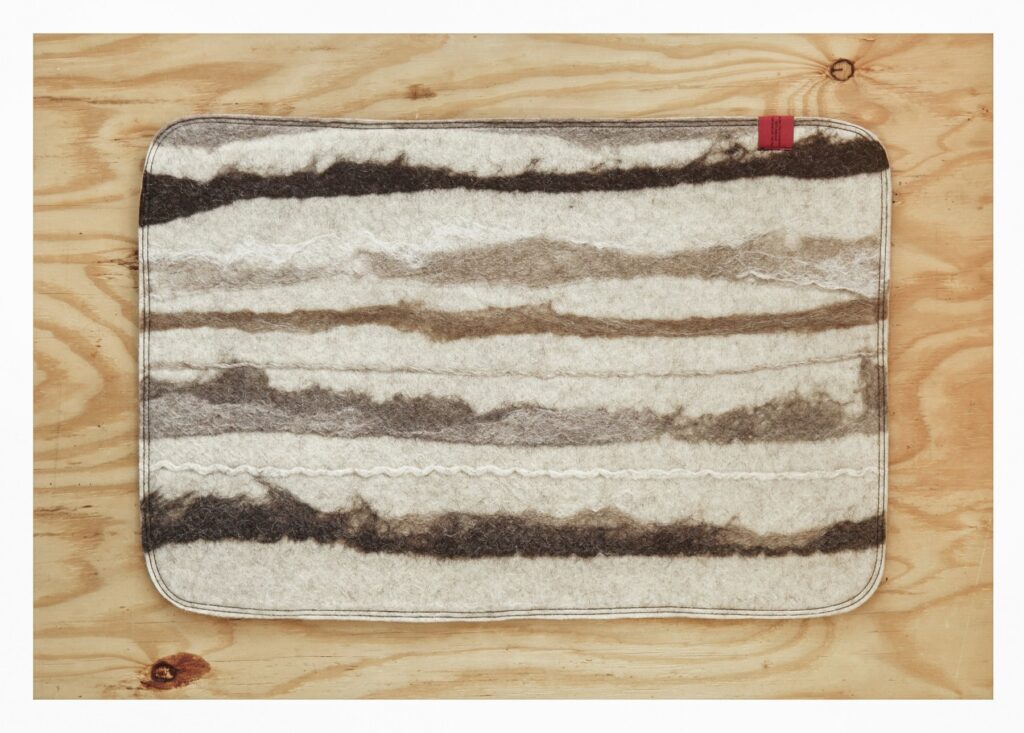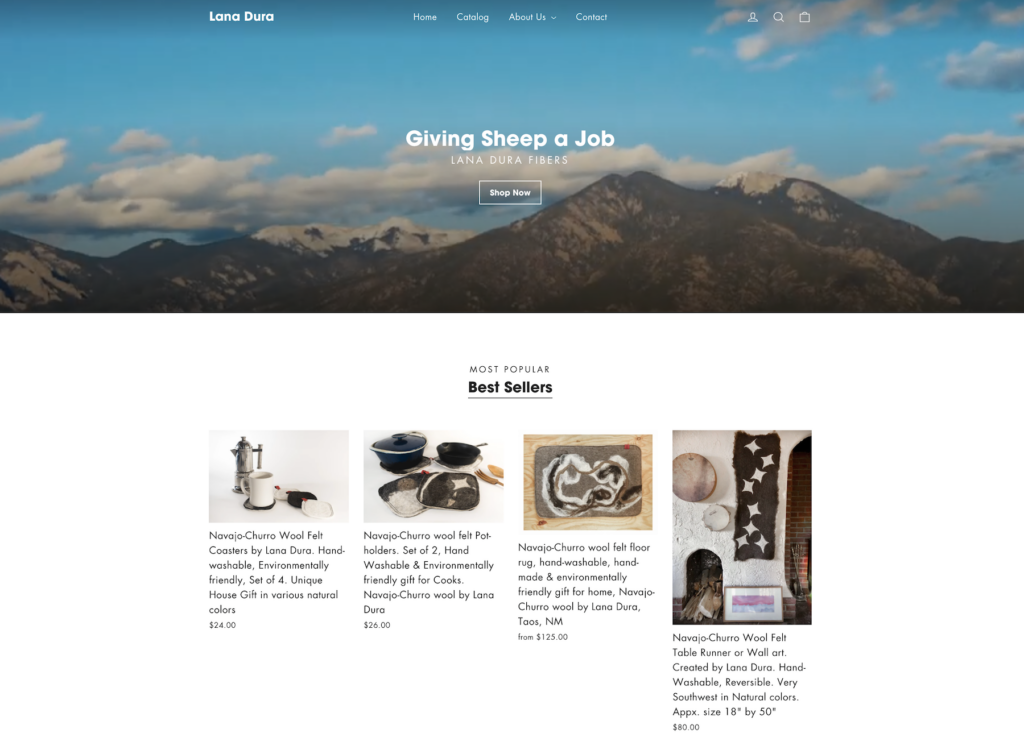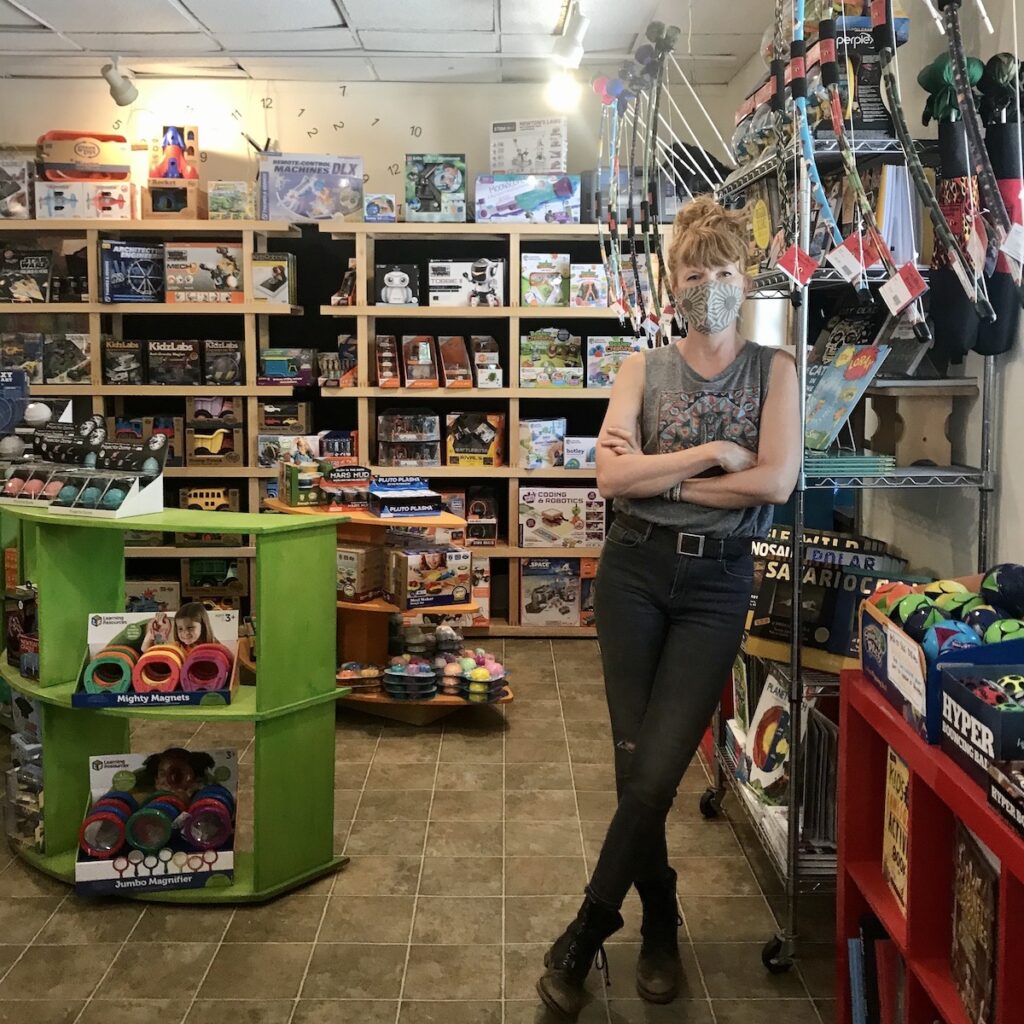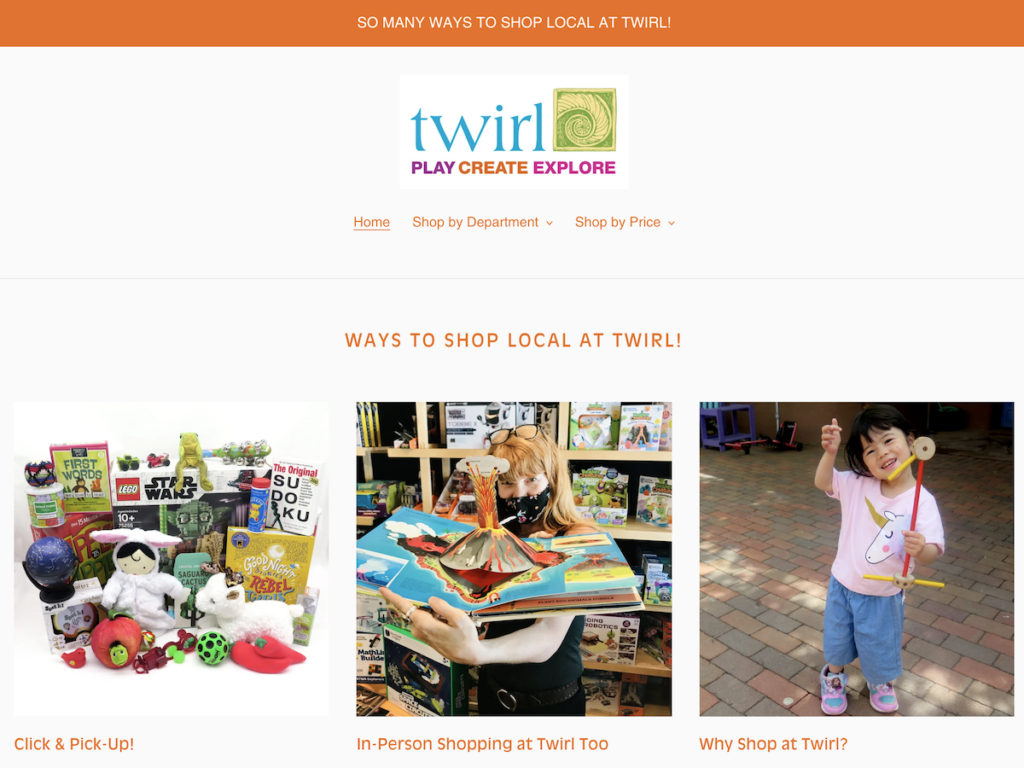By Ilana Newman, The Daily Yonder Read more

Aerial View of Taos, New Mexico. Photo courtesy of Adobe Stock
When tourists disappeared and storefronts shuttered amidst the COVID-19 outbreak last spring, business owners across the country faced a fraught retail environment. In Taos, New Mexico, where an estimated 40 to 50 percent of local businesses had little or no e-commerce, the moment called for evolution.
In response, Taos MainStreet—in conjunction with community partners and supported by funding from the LOR Foundation—created Business Alive, a program that helped business owners build e-commerce websites at minimal cost. Since launching this past summer, five merchants have received assistance in creating e-commerce sites and another five are in the development process now. The returns have been encouraging, with some businesses recording revenue increases up to 10 percent.
The Business Alive program debuted at a time when e-commerce in rural America is a growing priority. In 2019, a third of rural small businesses in the U.S. made less than 20 percent of their sales online. The pandemic, though, prompted an e-commerce boom: Some small businesses more than doubled online sales during the holiday season, and initiatives like those in Taos could sustain the momentum.
“The idea is that [these merchants] are developing a tool and it will benefit their business in the long run,” says Charles Whitson, executive director of Taos MainStreet. “It will help create another revenue stream for their business and hopefully give them some long-term stability.”
That kind of stability is something many shop owners in rural communities across the country are seeking as they look to a future beyond the pandemic. But setting up an e-commerce site isn’t as easy as simply clicking a button, and there’s a lot to consider before you dive in. Make an informed decision when selecting merchant services for your business. So drawing from the successes—and challenges—of the Business Alive program, we created this guide to getting up and running online. From breaking down what you’ll need to get started, to weighing the best platform options and just what’s required to continue growing your site, this handbook aims to make it easier for aspiring online merchants anywhere to find successes of their own.
“The idea is that [these merchants] are developing a tool and it will benefit their business in the long run. It will help create another revenue stream for their business and hopefully give them some long-term stability.”
Before You Begin
While making an online purchase requires just a few keystrokes, creating an e-commerce site requires a bit more effort: You’ll need photographs of your products, product descriptions, a marketing budget, and time for training. So before you begin, consider your goals, bandwidth, and budget. Start by asking yourself these questions.
What is the goal of your website?
-
- Are you trying to sell products? Are you looking for a way to let people make appointments for a service? Or do you simply want to make people aware of your brick-and-mortar shop? Neha Pant, co-founder of Taos High Tech, the husband-and-wife team who developed the Business Alive websites, met with business owners one-on-one to discuss objectives at the outset of the project so that her firm could develop the best product.
- Local Learning: That goal-setting meeting was especially helpful for Gail Golden and her partner, David Anderson, who jointly run the Golden Anderson jewelry and metalsmith shop in Arroyo Seco. In 2019, they hired a firm in Albuquerque to launch a website, but without a clear objective. After consulting with Taos High Tech, Golden Anderson retooled the website to include an online store.
How much are you willing to spend?
-
- According to Pant, website costs can range from a few hundred dollars to several thousand. If you build your own website, photograph your inventory, and do your own marketing, you could launch a website for as little as the monthly fee to keep it live, which is commonly around $30 per month. If you opt for professional development, hire photographers, and pay for marketing, your investment will be significantly higher, although the final product will likely be sharper.
- Local Learning: Minna White is a felt maker who creates wool pot holders, coasters, floor runners, and more at Lana Dura, her shop outside of Taos. She made her own website five years ago, but had made just two sales from it. “I wanted to go up a couple notches. I just didn’t feel like I had the skill to do it,” she says. “Then I saw a blurb about Business Alive, and I thought: ‘Hey, I’m going to try this.’” When her new site went up in December, she quickly made seven sales bringing in several hundred dollars in the days leading up to Christmas—a modest haul, but an encouraging sign as she builds momentum in the new year.
How large is your inventory?
-
- If you have only a handful of products, moving each one online might be a simple process, and it may not be too expensive to have each of the products professionally photographed. If your inventory is large—several hundred or thousand products—you’ll need to decide which products you want to move online first. Keep in mind, each piece of inventory needs a product description and will ultimately need unique tracking within your point-of-sale system.
- Local Learning: Nikki Ross, executive director of Twirl, a hybrid playspace and toy store for kids, has more than 2,000 products in her inventory. Moving everything online is a daunting task—as is determining the best method to ship toys to eager customers—and so far she’s added about 600 products to her online shop. With that amount of her inventory online, Ross is seeing early success: She says Twirl brought in more than $4,000 online during the first month the site was live, about 10 percent of total revenue over that period.
How comfortable are you with technology?
-
- You don’t have to be Bill Gates to build and manage your own website as well as your point-of-sale system (POS). Some content management systems (CMS) provide simple templates from which you can start from scratch, and Shopify is among the most popular because it can function as both a CMS and point-of-sale system. That said, you still have to be somewhat tech savvy or willing to learn, and unless you have development skills it may not be dynamic. Hiring someone to build a site and manage the POS will cost more than doing it yourself, but presentation and functionality are key factors that drive online transactions, and professional web developers often are the most equipped to customize the site to your specific needs.
- Local Learning: Elana Lombard and Chris Peiper, co-owners of the Mudd N Flood Mountain Shop on Bent Street, previously didn’t have any online presence and were using the Posim point-of-sale system for their outdoor gear shop. After launching a Shopify site and seeing an encouraging return during the holidays, they’re going to invest even more. They now plan to convert their entire inventory to Shopify’s point-of-sale system—which will cost about $2,000—using the additional revenue they’ve already made online.
Choosing The Best Platform
| Platform | Best for | Because | But be aware |
|---|---|---|---|
| Etsy, free to establish a shopfront, but you’ll pay fees on transactions | Artists, hobbyists, and other creatives who are selling a small number of wares and aren’t trying to scale up their sales significantly. | Etsy is one of the simplest ways to list and sell products online; the setup is quick and doesn’t require any web-development skills. Plus, sellers gain immediate access to a customer base that’s already inclined to buy handmade products and support independent makers. | With Etsy, you won’t have a custom web domain and you’ll have less functionality than if you establish a unique online store. So, Pant notes, you also may still want to supplement your Etsy profile with an online store. |
| Shopify, starts at $29 per month | Businesses that are selling products (versus services), like Taos’ Mudd N Flood Mountain Shop on Bent Street. After Mudd N Flood’s new website went live with Shopify in December, co-owners Elana Lombard and Chris Peiper sold about $2,000 in the days leading up to Christmas. | While other point-of-sale platforms like Square and Shopkeep are popular and consistently highly rated, Shopify often ranks best for e-commerce because of its speed, security, and user-friendly interface. That’s why the Taos High Tech team opted for this platform for most Business Alive participants. | As your online sales grow, Shopify transaction fees can add up. |
| Sesami (Shopify integration) and other scheduling apps: Prices vary but basic plans are free | Service-related businesses (like salons and auto shops) that need a website with the ability for customers to book appointments rather than buy products. No company in Business Alive’s initial cohort needed this tool specifically, but Taos MainStreet expects that it might in the future. | Sesami is highly rated among Shopify scheduling apps because it’s intuitive and easy to use, both for the business owner and customer. | There are dozens of service and scheduling options both for Shopify and other CMS providers. You’ll need to do additional research to determine which option is best for you. |
| Custom website that uses a content management system like WordPress, Wix, Squarespace, etc.; plans range from $25 to $45 per month | Business owners whose priority is to publish content and grow their brands rather than focusing on e-commerce. Custom CMS sites like those powered by WordPress emphasize blog-style pages and offer more templates. | WordPress is the most popular CMS platform available, and it powers nearly 40 percent of all websites. Because of this, it has supreme functionality and many professional developers are equipped to build and maintain a WordPress-hosted website. | Content can create brand awareness, but it won’t convert to cash. So if you’re even considering online sales in the future, look for a CMS that can integrate with e-commerce tools like Shopify WordPress, Squarespace, Wix, all do. |
After Your E-Commerce Site Goes Live
Having a website is a benefit only insofar as you know how to use it. You’ll need to devote time to training yourself and your employees in the backend of the site to make sure everyone is comfortable using your new point-of-sale system. After the first Business Alive websites went live, for instance, the Taos High Tech team spent several hours training each business owner in site functionality, online sales, and basic marketing.
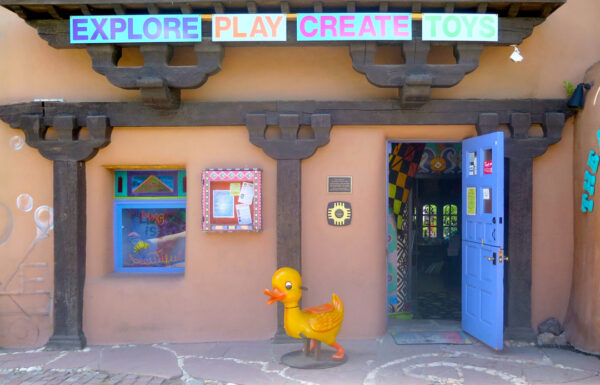
The exterior of Twirl’s main location. Photo courtesy of Nikki Ross
You’ll also need to let people know about your new site. Social media and email marketing are two of the most important ways to get your website in front of potential customers. Twirl, for example, already had a large social media following and a popular newsletter, which helped the store make quick initial sales.
But not all small businesses have robust email lists or Facebook and Instagram accounts. Those companies will likely need to invest in an email verification service like Zerobounce.net to grow their audience. Hiring an outside agency is also effective, but can be expensive—anywhere from several hundred to several thousand dollars. A more budget friendly option to consider is setting up a Facebook and Instagram ad account and budgeting a small amount—say $100 monthly—to boost posts and create ads targeting potential customers in your geographic area. (LOR’s social media overview toolkit can help you get started.) You can also leverage ads on social to gather email addresses.
Whitson’s team at Taos MainStreet is aware not only that businesses need additional marketing support, but also that financial barriers may put that level of support out of reach. As the Business Alive program evolves, Taos MainStreet is looking for ways to connect local merchants with affordable and professional marketing help. If that sounds like something you—or someone you know—can help with, reach out to Whitson directly.
Plenty of work remains for each Business Alive participant as they emerge from the program, but the first round of Taos merchants feel ready for that challenge. Just take it from Minna White. “I am not discouraged,” she says. “I’m all in.”
Download the LOR tool kit: Creating an E-Commerce Website: The Basics
Additional Resources
- How to launch a Shopify website
- How to add Shopify to an existing website
- How to choose the right point-of-sale system
- What other content management systems are available?
- How to track inventory on your website
- How to determine shipping rates
- How to use social media to grow e-commerce
- How to create a Facebook ad
- How to use email marketing for small businesses
- How to build an email list from scratch
- How to integrate an appointment-booking app on Shopify
- How to choose an appointment-booking app (without Shopify integration)
- LOR’s Social Media Overview Guide
Help Small Businesses Evolve!
Want to volunteer your marketing skills to help local merchants? Contact Taos MainStreet and let them know.
Lend A HandBy Ilana Newman, The Daily Yonder Read more
Through the No Fixed Abode program, a local gallery owner in Cortez is helping artists experiencing homelessness create and sell art. Read more
When the starting blocks at the city pool fell into disrepair, Cortez's local swim club's existence was uncertain. With LOR’s support the club upgraded the pool, which helped the team stay afloat and brought an economic boon to Cortez. Read more
Share an Idea
If you have an idea for improving quality of life in Cortez or Monte Vista, Colorado; Lander, Wyoming; Libby, Montana; Questa or Taos, New Mexico; or Weiser, Idaho, use this form to start a conversation with us.



